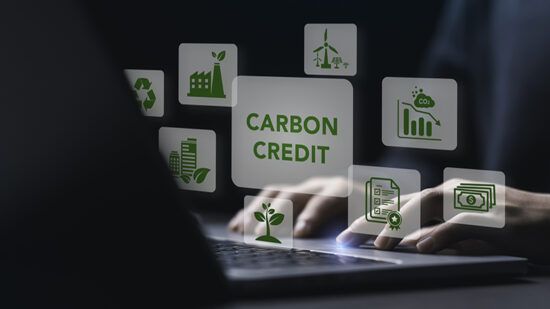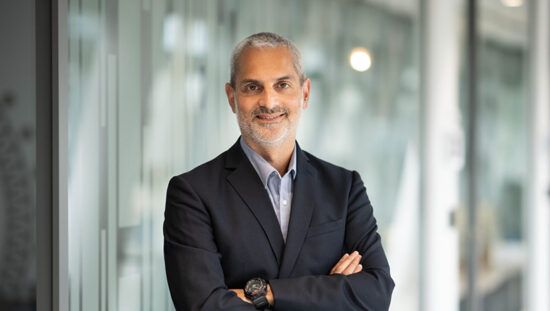Green investing is more popular than ever before. It’s hardly a surprise. On the one hand, a huge number of us now feel a moral obligation to ensure we only give our money to companies doing their bit to protect the fragile environment in which we live.
On the other, in a world where governments and regulators are cracking down on unsustainable corporate behaviour, keeping an eye on a business’s eco-credentials is frankly sensible practice.
Indeed, the firms taking steps today to meet the sustainability requirements of tomorrow are the ones most likely to thrive over time. And it is because of this over-riding principal that investor demand for responsible lending opportunities has soared in recent years. In fact, with the Covid-19 pandemic only bringing the environmental problems we face into even sharper focus, the value of the sustainable debt market hit a record $1.7trn as at end of 2020. Total issuances over the 12-month period totalled some $700bn—almost double that of 2019.
The key driver to this has, naturally, been green bonds. However, a lesser-known, complementary product that has been eating up an increasingly large slice of the responsible debt pie since its introduction in 2019 is the sustainability-linked bond. And with these products opening up more and more lending opportunities to ESG-minded fixed income investors, they may be very well worth keeping an eye on moving forward.
A unique sustainability-driven product
While it might seem obvious, a sustainability-linked bond isn’t a green bond. But it’s an important distinction to make.
Green bonds are ‘use of proceeds’ lending instruments so the cash will be earmarked specifically for a green project of some kind, agreed at the point of transfer. This project could take any number of forms – a plan to install a certain amount of smart meters in people’s homes, an investment in ow energy consumption property development, a scheme to replace a coal-fired power plant with a renewable alternative… The point is, the money lent can only be used for eligible projects.
With sustainability-linked bonds, however, the money lent to borrowers is not ring-fenced in such a way. Instead, it’s lent on the understanding that the borrower will meet some kind of sustainability goal in the form of one of more key performance indicators. These could be climate related – think of cutting carbon emissions by a certain amount by a certain date or reducing waste by a particular percentage by a particular deadline as examples. But they could also be more general, covering sustainability and social issues that do not impact the environment directly.
The point is, the money lent doesn’t have to be spent in any particular way, a fixed goal just has to be met by a certain point. What’s more, many sustainability-linked bonds also include what is known as a ‘ratchet mechanism’. This is a condition that kicks in if the sustainability target to which the borrower committed is not met, and typically takes the form of a penalty paid into the lender’s pocket. An excellent example is the sustainability-linked bond issued by electricity producer Enel in 2019 – the first of its kind. Enel raised $1.5bn in total from the product on the condition that it would have renewable energy account for 55% of its installed electricity generation capacity by 2021. Failure to meet this target would activate the ratchet mechanism, and the coupon paid to bondholders would increase by 25 basis points as a penalty.
All stakeholders benefit
The critical benefit of sustainability-linked bonds for lenders and borrowers alike is that they have the potential to let more companies participate in the sustainable lending market. Green bonds are perfect for issuers that have an adequate pool of areas where they can allocate green funds exclusively.
For example, it’s easy for an agricultural business involved in the rearing of beef to improve its impact on the environment in any number of ways. Cutting methane output, reducing water usage, cutting carbon emissions… the list goes on.
But this is simply not a luxury enjoyed by some companies. Many, simply as a result of the sector in which they are based, just don’t have heavy capital expenditure requirements in green areas like renewable energy, buildings, and utilities. This is an issue faced by many consumer stocks, for example. However, just because these firms have fewer green projects at their disposal, it doesn’t mean they are any less dedicated to integrating sustainability across their operations. Moreover, it almost certainly doesn’t mean they will be of any less interest to fixed income investors with a passion for ESG.
Sustainability-linked bonds are therefore an innovative solution that unites these two stakeholders together to their mutual benefit. And, for lenders, the benefits of these products only continue from here. For one thing, as with green bonds, these individuals enjoy all the usual trappings of bond investing like reduced volatility and risk compared to many equity investments, potentially attractive interest rates through coupons, and the possibility for portfolio diversification. However, they also get the added advantage of knowing their money is helping to give something back to the world or promote social progression and sustainability in the process.
On top of this, the ratchet mechanism bundled into the sustainability-linked bond structure adds in an additional layer of accountability. This sort of accountability (in part by way of guaranteed consequence) incentivises the lender to deliver on its word. And if they don’t, then the borrowers can at the very least be comforted by the additional cash in their pocket as a result.
A growing opportunity
The world of sustainability-linked bonds is in its nascent stages. And as with every emerging area, questions marks remain – the lack of ring-fencing arguably makes it difficult for lenders to know exactly how their money is being allocated, for example. However, in a world where sustainability has become ingrained and essential from both an environmental and investment perspective, these products offer the fixed income world yet another attractive opportunity to contribute.








